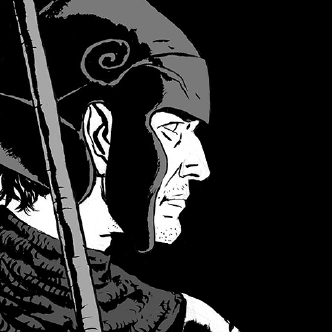The French Connection's manic energy hasn't lost its edge
- Jarek Kupść

- Feb 26, 2022
- 4 min read

What kind of a man does it take to crack the biggest heroin smuggling operation in New York? The French Connection wastes no time in establishing its protagonist as a flawed and violently obsessive cop who bends every rule in the book. “Popeye” Doyle is an equal opportunity bigot with a temper to match. Off duty, he likes his drinks double and his sex kinky.
It was a risky decision to anchor a big action film on such an unsavoury character and to take a chance with an untested leading man. But the gamble paid off. Doyle’s faults and his maniacal drive, so thrillingly delivered by Gene Hackman in his first starring role, certify him as a perfect guide to the flip side of the American Dream. “Never trust anyone” is his professed motto.
A lot has happened in the country since the real-life “French Connection” heroin bust of the early ’60s. By 1971, drug use in the United States is reaching epidemic proportions. The narcotics market is wide open, with New York Harbor being the chief entry point for European dealers. President Nixon proclaims war on drugs while making enemy lists. The shadow of Mỹ Lai massacre is looming large over the Vietnam War fiasco. Trust in authority has eroded. Paranoia creeps in.

The level of unhinged authenticity displayed in The French Connection hasn’t been seen in Hollywood before. Taking hints from Costa-Gavras’ political thriller Z, director William Friedkin captures the action with a mostly hand-held camera. The cinéma vérité immediacy of the film is enhanced by real locations, rendered without a hint of glamour by cinematographer Owen Roizman. The austere backdrop of New York is brutally effective – the streets are grimy, the noise overwhelming, and the weather foul. Bums, drug addicts, and minority gangs linger in the corner of nearly every frame of the picture.
By contrast, the ancillary Marseille scenes feel almost idyllic. For a crime film, The French Connection serves up its procedural shot with a chaser of harsh social critique. The pungent, tactile quality of the film set a distinct tone for New Hollywood’s urban drama of the incipient decade. Before long, Travis Bickle would step out of his taxicab to wash the scum off the streets.
Hackman’s Doyle was based on the real-life detective Eddie “Popeye” Egan, whose exploits (with partner Sonny Grosso) are dramatised in the film. Up to that point, the Hollywood cop hero was a trope – a stylised concept that fit the noir mould. Sure he was violent at times and always a cynic, but he appeared more as a chiaroscuro construct rather than in the flesh. Hackman changed all that. Doyle is a mad bulldog who feeds off the city around him – for energy as well as for guidance. This symbiotic relationship blossoms in the most exciting vehicular chase in film history.

In Bullitt, Steve McQueen takes us on a 10-minute rollercoaster ride around San Francisco. The film is terrific, but the famously dynamic car duel feels a bit tacked on for effect. In The French Connection, by the time its signature car-versus-train chase is over, bystanders have been shot, multiple vehicles crashed, and a subway derailed. From the sniper assassin to the terrorised citizens on a runaway train, this is America on a collision course with itself. Channelling Eisenstein’s Potemkin, the sequence is pure cinema of adrenalin-driven attractions – and a sly political comment on a country in turmoil.
In his pursuit of justice, Doyle is a case study of compulsive desire – constantly chasing after somebody, or something, with bipartisan carnage left in his wake. The whale-sized heroin shipment is always just out of his reach, and so is the bad guy. Understandably, “Popeye” gets frequently mad – his nickname should have been “Ahab”.
When the final pursuit proves futile, the detective continues to fire his gun at shadows. The sheer momentum of denial propels Doyle’s body into darkness, but his eyes convey an entirely different feeling – that of internal defeat. Ultimately, the hero blends in with the decaying factory surroundings, overwhelmed by circumstances beyond his control. It is a bleak, fatalistic ending which implicitly captures the American zeitgeist of the pre-Watergate era.

The same year as The French Connection, Dirty Harry emerged with his cartoonish eye-for-an-eye ethos, and Death Wish vigilantism was just around the corner. Even the original choice for Harry, John Wayne, corralled himself into the urban crime mode with McQ. Yet Hackman created the only fully dimensional, relatable character in the genre. There was no undue posturing. No snappy one-liners. Eastwood, Bronson and Wayne were all about mythologising the violence, while McQueen hid behind a facade of cool. With Doyle conflicted humanity was always lurking under the rough exterior.
Half a century later, the urgency of The French Connection’s quasi-documentary style feels undeniably modern. Ongoing police brutality and the opioid crisis keep the film’s narrative disturbingly relevant today. With its unflinching reflection of the socially polarised American reality, this true-crime thriller negotiates itself into a pending political statement, as an unvarnished portrayal of a country in a frantic search of its moral centre.




Comments